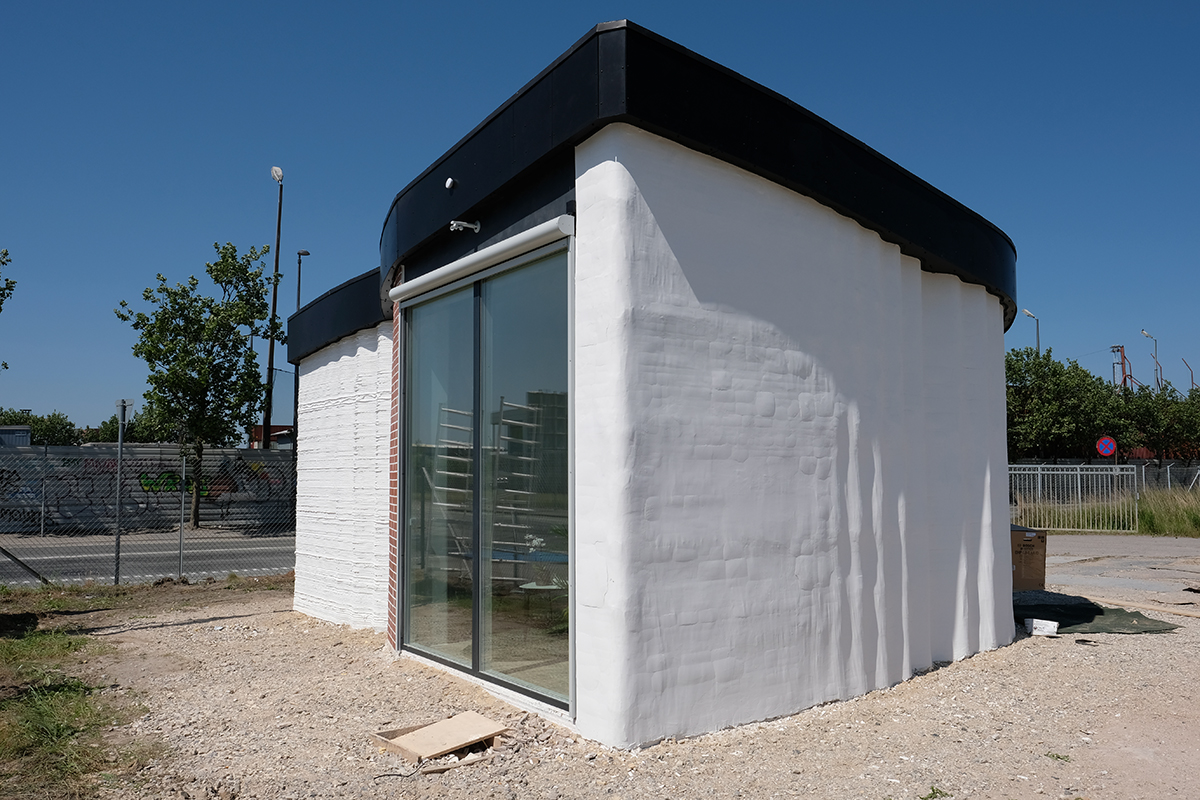It turns out that 2020 was an excellent year for Danish firm COBOD. The cement 3D printer manufacturer reported a gross profit of DKK 9.3 million ($1.5 million) for 2020 – almost double its DKK 4.9 million ($780,000) income in 2019. Company Founder and General Manager Henrik Lund-Nielsen also promised substantial revenues by the end of 2021, driven by growth in 3D printer orders. He even said that during the first four months of the year, order intake tripled the total volume from last year, despite the ongoing COVID-19 pandemic.
According to Lund-Nielsen, the positive outcome has a lot to do with a growing global customer base. From large corporations to small businesses, the demand for 3D printed structures in the construction industry draws a lot of attention. Furthermore, this heightened interest is bound to push the adoption of additive construction technologies across a wide range of residential and commercial segments. To satisfy current demand, COBOD had to hire more employees and expects to have a team of 60 people by the end of 2021.
As one of Europe’s pioneering manufacturers of large 3D printers for robotic construction, COBOD’s customers are some of the world’s largest companies, including GE; LafargeHolcim, France’s largest producer of cement and concrete; L&T Construction, one of the biggest contractors in India; and the PERI Group, a German supplier of formwork equipment and scaffolding for the construction industry. This last company is also COBOD’s largest investor.

The BOD office, Europe’s first 3D printed building in Nordhavn, Copenhagen. Image courtesy of COBOD.
Additive manufacturing (AM) has proven it can be successfully applied to constructing a wide range of structures as a sustainable and cost-effective process. However, the technology has yet to realize its full disruptive potential to revolutionize the industry, and this has a lot to do with realistic expectations. There has been a lot of hype around far-fetched projects throughout the past decade, like same-day 3D printed housing or “crane printed” skyscrapers. Instead, COBOD, which started a few years ago as a spin-out of 3D Printhuset, does not believe in hype, choosing to take a pragmatic approach to large-scale AM.
In 2017, COBOD developed Europe’s first 3D printed building in Nordhavn, Copenhagen. At the time, the company invited the press to witness the first moments of the printing process of the building, dubbed BOD, short for Building On Demand. At less than 50 square meters, the small office was large enough to illustrate some of the economic and architectural advantages of applying 3D printing technology to construction while following the strict building codes in Europe.
Proving the technology was successful was challenging but a significant first step for COBOD’s printer also called BOD. Since then, the company has escalated, leading projects globally. For example, together with GE Renewable Energy and LafargeHolcim, COBOD co-developed the world’s first 3D printed concrete wind turbine tower, a much taller and cost-effective version than conventionally-built towers and capable of capturing stronger winds. The three partners hope to generate more renewable energy production while lowering the Levelized Cost of Energy (LCOE). They plan to develop a wind turbine prototype with a printed pedestal, as well as a printer and materials to scale up production.
Once again, COBOD unveiled the first two-story house printed on-site in Belgium. At eight meters tall, with a floor area of 90 square meters, Kamp C was created using one of the largest 3D concrete printers, the BOD2. Each platform consists of a gantry system with several 2.5-meter modules that vary depending on the specific construction objective. COBOD printers start at €180.000 but can reach more than €1 million, particularly the ones capable of raising a building of more than 1,000 square meters with multiple floors. According to the company, most customers buy printers in the price range between €300.000 and €500.000.
The 3D printed structures made by COBOD’s devices have gained considerable global attention, videos of Europe’s first 3D printed two, and three-story buildings had more than half a million views. The process used to print homes, bridges, and larger structures is both sustainable and time-efficient.
Like most of the technology available today for additive construction, it produces much less waste than traditional methods. Thanks to robotics, fewer people will be needed to complete the project. These changes translate to minimal delays, lower accident risks, and a smaller environmental impact. The technology’s potential has been hinted at as a solution to the current global housing problem. Although that might be a farreaching goal today, in the future, construction sites could be modernized dramatically by digital fabrication technologies and provide essential homes at lower costs, as long as the market is ready to widely adopt AM in construction.
Subscribe to Our Email Newsletter
Stay up-to-date on all the latest news from the 3D printing industry and receive information and offers from third party vendors.
You May Also Like
Precision at the Microscale: UK Researchers Advance Medical Devices with BMF’s 3D Printing Tech
University of Nottingham researchers are using Boston Micro Fabrication‘s (BMF) 3D printing technology to develop medical devices that improve compatibility with human tissue. Funded by a UK grant, this project...
3D Printing Webinar and Event Roundup: April 21, 2024
It’s another busy week of webinars and events, starting with Hannover Messe in Germany and continuing with Metalcasting Congress, Chinaplas, TechBlick’s Innovation Festival, and more. Stratasys continues its advanced training...
3D Printing Webinar and Event Roundup: March 17, 2024
It’s another busy week of webinars and events, including SALMED 2024 and AM Forum in Berlin. Stratasys continues its in-person training and is offering two webinars, ASTM is holding a...
3D Printed Micro Antenna is 15% Smaller and 6X Lighter
Horizon Microtechnologies has achieved success in creating a high-frequency D-Band horn antenna through micro 3D printing. However, this achievement did not rely solely on 3D printing; it involved a combination...






























